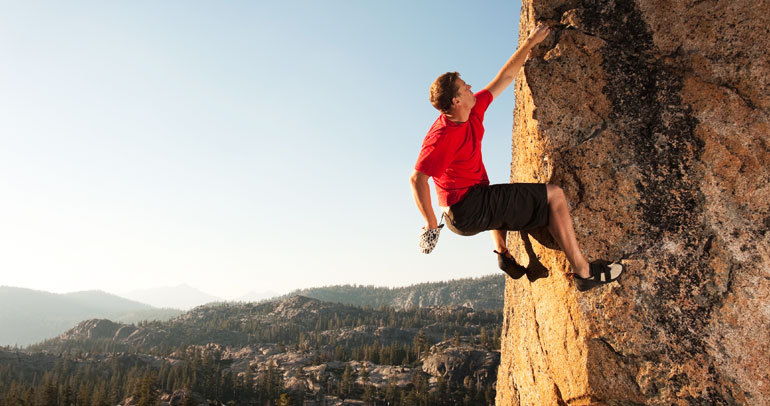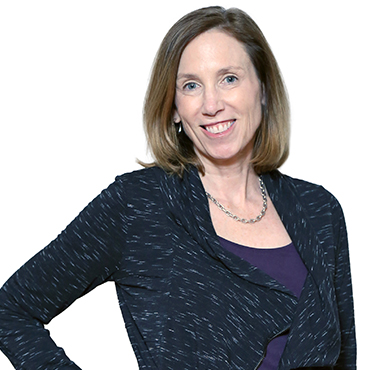
On July 3, 2017, Alex Honnold became the first person to free solo Yosemite’s El Capitan. Free soloing is lone climbing without ropes or harnesses. El Capitan is a 3,000-foot vertical granite slab. If you haven’t seen it, treat yourself to the 2019 Academy Award-winning documentary Free Solo. It is a nail-biting study of human achievement.

Source: Rolling Stone
Free Solo’s climbing footage is breathtaking. But it’s the character study within the film that I was drawn to. It’s not just the story of someone driven to do something remarkable. It’s also about the less remarked upon, painstaking work of research, analysis, modeling, and planning that went into it.
As insights professionals, particularly those who specialize in Market Opportunity Assessment and M&A research, our primary value is to assess potential paths to growth and minimize risk. We do that through painstaking assessment, methodically studying markets and their macro and micro attributes. We help to visualize an all-encompassing, geographically nuanced map of industry landscapes, market trends, and competition. Mountains, like new markets, pose multiple routes of ascent, and our role is to help identify which pathway is most viable and how to avoid falling rocks.
Granted, in our business, lives do not hang by fingertips. But as strategic consultants, we do play a critical role in the high-stakes decision-making of our clients. So here are a few Free Solo observations for those who rely on insights to make consequential decisions.
Alex Honnold Is Not a Risk-Taker
In one of many post-climb interviews, Jimmy Kimmel asks Honnold if he was ever afraid. To which he offers a perfectly reasoned, matter-of-fact response: “I probably would be if I hadn’t prepared for it.”
His response goes to the core of risk. Honnold sees scaling 3,000 feet of vertical granite without a rope as a low-risk activity. Why? Because he’s a professional climber who has spent countless hours on rock faces across the world. He studies, maniacally, every inch of every surface. Every move is endlessly choreographed. He keeps a detailed journal of every climb and physically and mentally replays these climbs on horizontal ground. He inhabits the minds of climbers who came before him, studying their moves and learning from their mistakes. For someone who climbs without ropes, he is kind of a belt-and-suspenders guy.
Honnold spent over a year preparing for El Cap (and many years before that simply imagining it was possible). His preparation included about 50 roped climbs, including a ‘mountain sweep’ in the days preceding the free solo. He and a climbing partner checked every inch of the route for loose rocks, birds’ nests, or any other foreseeable factors that could send him to his death.
For every climb, with ropes or without, Honnold is consummately prepared. To him, the risk is low.
But the consequences are high.
Insights Should Put Clients “IN THE EXPERIENCE”
“People need to differentiate risk and consequence,” says Honnold. “You can’t determine risk just by seeing a photo [of a rock face]. You can’t tell how solid I am, how hard the climbing is—all the different factors that go into determining whether or not something is risky. You can’t really judge that unless you’re in the experience.”.
The same kind of relentless preparation and planning goes into scaling the mountains of new markets or acquisitions: a punctilious analysis of conditions, players, opportunities and threats. It’s about taking into account all these factors and meticulously choreographing each foothold forward. Preparation can’t alter the consequence of a business decision, but it certainly alters the risk.
And to Honnold’s point about being “in the experience,” in our role as insights professionals, thorough-going analyses of potential actions require first-hand knowledge of the realities on the ground. When we are evaluating market potential, we can make assessments based on a number of objective factors. There are regulatory conditions, either favorable or unfavorable. There are competitive dynamics that can either prove difficult or signal an opportunity. And there are also cultural nuances that call for a deeper understanding. Differences in local attitudes and traditions can impact how a brand should behave and communicate in that market.
Every mountain poses a unique challenge. The value that insights providers deliver is to reveal those challenges, chart an optimal path of ascent and make that mountain as real as possible for our clients.
The same goes with M&A research when we help clients see the behaviors and leanings of a company’s customer base or hear the perspectives of people within a merger-worthy organization.
Our role as researchers isn’t to deliver an assessment in the form of a hundred pounds of cross tabs. Instead, when we help clients hear the markets, visualize the conditions, and feel the climb, we prepare them for a successful outcome. When we put clients “in the experience” and help them picture—like Alex, each maneuver, we arm them with the confidence to reach for that next nub of granite.
It’s OKAY to BAIL
There’s a riveting scene in the film where Alex prepares for an ascent in the early hours of a November morning, 2016. This was to be the day he free soloed El Capitan. But he appears to have woken up on the wrong side of the van he lives in. The cameras capture an alert but visibly irritated Honnold. Someone clearly not in a state of flow.
Yet Alex is prepared, and he is motivated to achieve the climb before season’s end, which is quickly approaching. He also later admits to a feeling of indebtedness to the film crew who, like him, had been patiently preparing for this moment. His desire to reward their confidence in him—like the pressure of pleasing investors and other stakeholders, threatens his ability to make clear-eyed judgments.
Alex got only a few hundred feet before turning back, using fixed ropes for his descent (no one free climbs backward). It’s impossible to know whether, by climbing down, he simply delayed his achievement or avoided certain death. But it is possible, I think, to look at this as an insight-driven decision.
As strategists and research partners, we must keep in mind that there are two types of conditions that impact a client’s decisions.
There are external conditions. For those, we can do a lot to help overcome external obstacles and leverage favorable conditions. In Alex’s case, the external conditions on the day of his aborted attempt were the same as they were seven months later. All the information about where to deploy dyno moves, finger locks, and heel hooks were the same as they were on the day he succeeded. Nonetheless, he bailed.
That’s because there were internal conditions Alex could not explain—some having to do with the film crew’s presence. At that time, he did not have enough insight into the meaning of these factors and how they might impact his goal.
The same can be true for our clients. Our assessment of external conditions may provide the insight a client needs to understand that a new market or a potential acquisition presents compelling opportunities. But the ability to take advantage of those opportunities depends on more than an external assessment. It’s also about assessing one’s own readiness to take advantage of that opportunity. As research partners, we must stay keenly attuned to the internal conditions that affect client readiness.
The question is not, “Is it the right time to climb a mountain?” Instead, the question is, “Is it the right time for you to climb this mountain?”
Of course, the more we know about internal conditions, the more prepared we can be to either support the next foothold forward or plan a measured retreat.
In the case of a retreat, was all that research and analysis of external conditions a waste? Absolutely not! Indeed, it is often because of everything a client knows externally that they can be more attuned to the internal nagging of the unknown. In other words, all that meticulous and painstaking research, planning and strategizing should also arm decision-makers with the confidence to bail.
At Escalent, we specialize in M&A research and assessing market opportunities. Talk to us about how insights can help you reach your mountaintop.
A version of this article was first published by Quirk’s, July 8, 2019.








